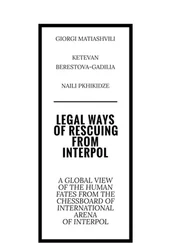Attitudes towards lycanthropy in the late 1590s were in a state of flux. Although Christian scholars had insisted for centuries that werewolves were no more than an optical illusion – essentially because only God could turn humans into ravenous beasts and He had better things to do – the orthodoxy was under pressure. Lawyers, as usual, were at the forefront of the debate. The most eminent jurist in all France, Jean Bodin, had just written a witchcraft manual in which he argued that Satan did in fact enjoy the power to transform people into wolves. There is little reason to think that Ayrault subscribed to Bodin’s views, which were controversial even among his fellow demonologists, but the judge from Angers had a belief in the value of self-condemnation that was profound. In words that would be cited by French lawyers for the next two centuries, he wrote – in the same work that attacked his country’s legal secrecy – that the ultimate goal of criminal law was to ‘instil and engrave its fundamental principles on people’s hearts’. It was ‘not enough that wrongdoers be justly punished’ he insisted. ‘They must if possible judge and condemn themselves.’ And although he elsewhere warned that confessions could be false, he now put that credo into practice.
Ayrault began by asking Roulet to tell him what he had been accused of – a traditional if sneaky opening gambit among inquisitors – and Roulet replied that people thought him to be a villain. Ayrault specified that he wanted to know what he had been accused of at the time of his arrest, whereupon the beggar told him that he had committed an offence against God and that his parents had given him an ointment. When Ayrault hopefully asked if the potion turned him into a wolf Roulet denied it, but further prodding inspired him to admit that he had killed and eaten a child. He then confessed that he had, after all, been a wolf. Questioned in detail about his appearance at the time, he stated that his face and hands had been bloody, that he had had a wolf’s paws but a human head, and that he had attacked the boy with his teeth. Ayrault had heard enough. Whatever his attitude towards lycanthropy might have been, he certainly believed in murder. And having heard Roulet’s admissions, he now condemned him to death.
Records of the case give no indication why the sentence was not immediately carried out, but they show that the Paris court of appeal quashed the sentence of death three months later. Roulet was more foolish than evil, declared the parlement , and the best way to deal with him was to give him compulsory religious instruction in an asylum for two years. The basis for its decision is not set down, but any sixteenth-century court would have been even less likely than its modern counterpart to reprieve a self-confessed murderous cannibal unless absolutely sure of his innocence. Whether the beggar had been framed or simply fell victim to superstition, Ayrault had evidently got it wrong. He saw the risks of secrecy and untested evidence more clearly than anyone else in early modern France, but alone in his court, away from public scrutiny, his belief that prisoners should ‘judge and condemn themselves’ had led him to encourage a man’s delusions – and then to conclude that they were true.
The progress of inquisitorial procedures through German-speaking central Europe was more uneven than in France, but they would become just as dominant. The execution of the heir to the Hohenstaufen dynasty in 1268 * saw the region dissolve into a collection of several hundred more or less independent towns and principalities however, and older rituals lingered in many areas long after they had disappeared in others. Some jurisdictions required, for example, that a murder victim’s corpse be borne into court by chanting relatives and assume formal responsibility for prosecuting its killers. A variation on the same theme saw the deceased’s hand severed and given to the defendant who, clad in a loincloth, would have to hold it and assert innocence three times. If the judge detected sufficient signs of discomfort, in either the defendant or the hand, guilt would be established.
Judgment in Germany also retained some notably eccentric features. Judges took their seats clutching unsheathed swords and, after proceedings had been called to order three times by a bailiff, the defendant would recite a confession or request an acquittal. It made no difference which. The judges were formally required to have already decided their verdict, and they would follow up the plea by unfurling and reciting a previously prepared decision. If they had elected to convict, the senior of them would snap his wand of office, toss it to his feet, and pronounce the condemned person’s doom. ‘Your life is over,’ he would roar, as a muffled church-bell tolled. ‘There is no place on this earth for you any more, and in breaking this wand I also break the tie between you and the human race. Only with God may you still find mercy. Woe upon you here! Woe! Woe!’ The clerk would add three more woes. So too would the bailiff. And when the woeing was over, the prisoner’s theoretical expulsion was made practical, as he or she was staked through the heart, burned on a stake, pulped with the rim of a large cartwheel, or strangled from a gallows.
The decentralization meant that German courts would be typified by a relatively freewheeling attitude towards legal technicalities. Far from mitigating the harshness of inquisitorial procedure, however, the flexibility generally made it even more deadly. German judges often enjoyed a particularly broad discretion to pursue obsessions, whether their own or those of their political masters, and all manner of blameless defendants would feel their wrath over the years. Some of the worst injustices came from one particularly dark corner of German jurisprudence: the Jewish ritual murder trial.
The myth that Jews were in the habit of slaughtering young Christians was not born in Germany. The allegation was first recorded in Norwich in 1144, and similar accusations sparked off bloody pogroms in England and France throughout the 1200s. It was only the wholesale expulsion of Jews from both countries (in 1290 and 1306 respectively) that pushed the epicentres of hatred towards Spain and central Europe. But fear and resentment spiralled as the refugees moved and, at a time when the courtroom was becoming the sharp end of political power, Germany’s inquisitors were soon ensuring that both lodged deep within the German body politic.
Their modus operandi is exemplified by a 1476 case that arose out of the Bishop of Regensburg’s discovery that a tortured Jew in Trent had confessed to murdering a Christian child in his diocese. He turned immediately to the local magistrates and in cahoots with the region’s duke, they swiftly itemized the property of the city’s richest Jews. Seventeen were arrested. Although the supposed victim was identified in only the vaguest terms, the judges then drew up a list of twenty-five questions that included the following:
Which Jews brought and purchased the child? Who tortured him? How much money did each Jew give to participate? What was the blood used for? How were the needles used? How were the pincers used? Why was a handkerchief tied around the child’s throat? How was the foreskin on the penis cut off and which Jews cut off the penis and what was done with it? Which Jewesses knew about this and what had they said?
The men, weighed down with stones, were raised and dropped by the rope of a strappado as each question was asked. Within two weeks, six had confessed to the imaginary murder.
The inquisitorial system could also create not just crimes, but entire superstitions. One of the most chilling cases of all, which is also the earliest to be fully recorded, illustrates the process with graphic clarity. In March 1470, workers restoring the charnel house of the small Black Forest town of Endingen reported the discovery of four skeletons, two of which were missing their skulls. It was just a month before Easter, never a high point for Judaeo–Christian harmony in the Middle Ages, and the presence of stray bones in the ossuary sparked panic. Someone recalled that, eight years before, Elias the Jew had sheltered a destitute family, and he and his two brothers were swiftly arrested and subjected to repeated sessions on the strappado. Within days, all had accepted not only that they had murdered the beggars, but also that they had beheaded two children and bathed in their blood.
Читать дальше




![Theresa Cheung - The Dream Dictionary from A to Z [Revised edition] - The Ultimate A–Z to Interpret the Secrets of Your Dreams](/books/692092/theresa-cheung-the-dream-dictionary-from-a-to-z-r-thumb.webp)







